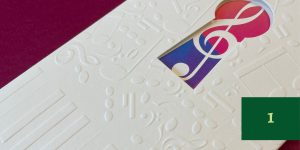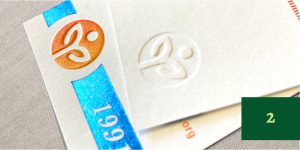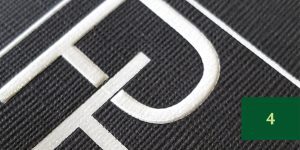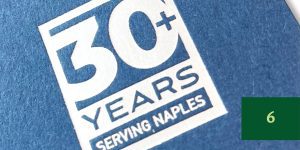If you have not yet considered using embossing or debossing for your organization’s marketing materials, here is everything you need to know to help you get started.
Embossing is the process of creating a raised image, design, or text on a material, such as paper. Debossing results in a design that’s stamped down or recessed on the surround materials. Both methods use metal plates to press or imprint your design into the product you’re customizing.
You may also have heard the term blind embossing. It is the use of embossing without matching the ink or foil, so there is the texture but no color.
Embossing and debossing create designs that leap from the paper. The effect adds depth to any design, perfect for making the finished product look elegant and sophisticated. Because the embossed area sits higher or the debossed area sits lower than the rest of the material, it’s discreet and elegant. Simply stated, they create visual complexity by adding a new dimension to your brand message and graphic. They also offer a wide variety of effects for a truly unique look.
Embossing and debossing can be quite effective in making your business cards, folders, invitations and other printed marketing materials stand out.
Here are a few things to consider as you plan to use embossing or debossing for your next project:
- You need to think about the reverse side of the piece as embossing impacts both the front and back side of the sheet. As a result, the back is typically left blank.
- The size of the embossing area has a direct correlation on the cost of embossing. The larger the area, the more extensive the embossing die is to produce. If there’s more than one area getting embossed, you may need to pay for multiple dies.
- The embossed images most commonly align with another printed of foil-stamped image.
- Very thin lines are not possible or practical with embossing and debossing.
- The type of paper selected may have an impact on the embossing/debossing. We are experts in helping you find the appropriate paper for your project.
- It can be challenging to present embossing/debossing (especially blind embossing) in our proofs to you. But will will work with you to ensure your marketing materials meet your expectations.
- Blind embossing works best on lighter color paper as it tends to be visible as a shadow, and shadows are very difficult to spot on dark paper.
- Blind embossing tends to work best when it’s larger. If it’s too small, it can get missed completely.
And, here are a few examples that demonstrate how embossing and debossing can truly bring your marketing materials to life.
1. This invitation sleeve is an example of blind embossing.
2. This example shows what embossing looks like on the front versus on the back. It is printed on the front, but because of the embossing, it is blank on the back.
3. This is an example of the unique effect of blind embossing.
4. This lovely example shows embossing with white foil on a presentation folder. Note that only part of the logo is embossed.
5. This presentation folder is a great example of printing, combined with a large area of blind embossing.
6. This dull silver foil combined with blind embossing is subtle and attractive.
Our team loves coming up with ways to make our clients’ marketing materials more effectively represent their organization’s brand. Whether business cards, pocket folders, invitations or other printed pieces you use to tell your story, let us help you take it to the next level. If you are ready to explore options, reach out to me for a consultation and a quote.
Like what you’re reading? Have you signed up for our marketing tips enews yet?
